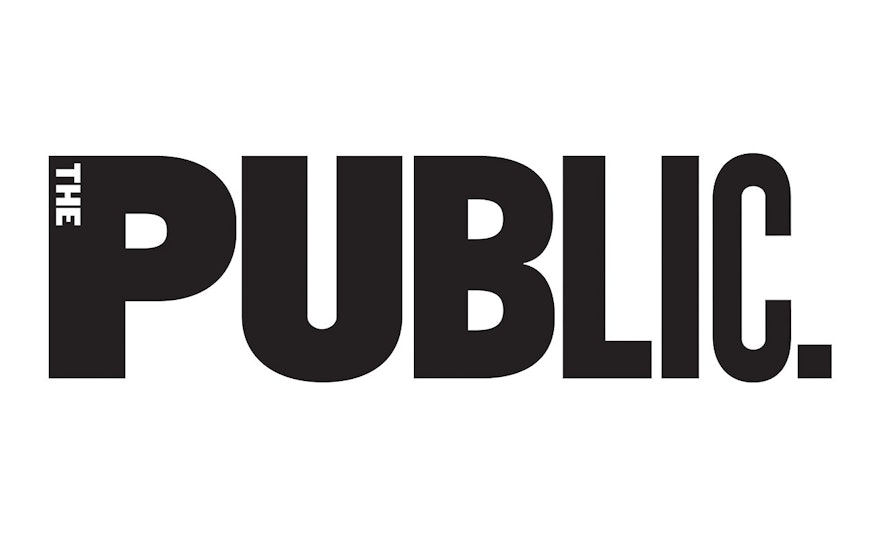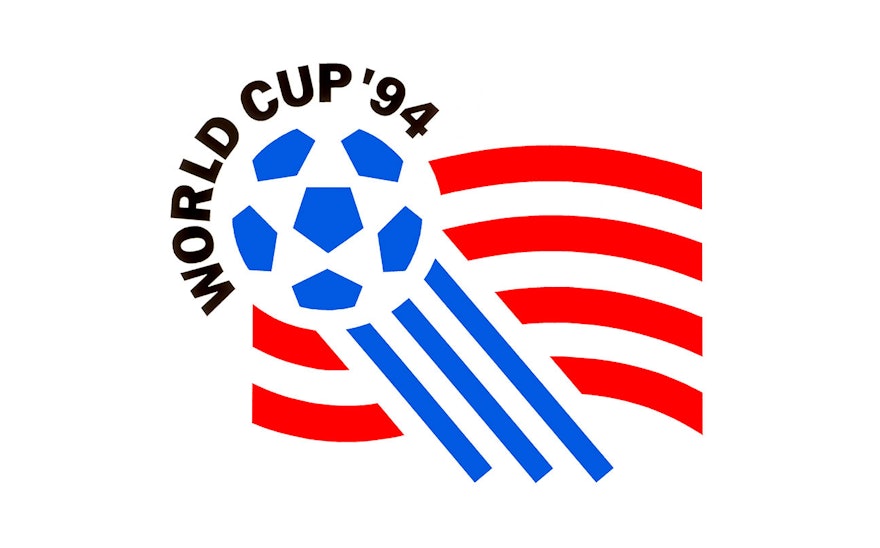Since 1994, Pentagram has been involved with the graphic identity of the Public Theater, a program that would eventually influence much of the graphic design created for theatrical promotion and for cultural institutions in general. The original identity responded to The Public's mission to provide accessible and innovative performances, creating a graphic language that reflects street typography in its extremely active, unconventional and almost graffiti-like juxtaposition.
The 1995 posters Pentagram designed for The Public Theater’s production of Savion Glover’s Bring in 'Da Noise, Bring in 'Da Funk featured the wood typefaces used throughout The Public's identity. The play's title and theater logos surrounded the tap artist in a typographical be-bop, like urban noise. And for the first time, advertising for The Public appeared all over the New York City landscape, from Chelsea to Harlem, in Times Square, at the Lincoln Tunnel, on city buses, and most fittingly, beneath one's feet on the sidewalk.
After this campaign, The Public’s typographic style popped up everywhere, from magazine layouts to advertising for other shows. In fact, the whole style of theater advertising changed and everything began to be displayed in blocky wood type in all caps. The Public's campaigns have had to continuously change to stay fresh in the city's highly competitive theatrical market.
Individually the posters tend to reflect what is going on culturally at the time, for example posters for the 1995 performances of The Tempest and Troilus and Cressida carried the political and promotional message “Free Will” that was not only an advertisement for the free performances, but also as rallying cry to arts supporters to exercise their public influence as that year a conservative Republican Congress was threatening federal funding of the arts.
The 1996 poster for the productions of Henry V and Timon of Athens afforded Pentagram some of the most playful typography of the series. The designers combined her handwriting with wood type in the 1997 poster for On the Town and Henry VIII. The season represented the culmination of Papp's ambition to produce all of Shakespeare's plays at the Delacorte. The marathon took ten years and its success is noted on the left side of the poster.
The typography of the 1998 poster emphasized the melodrama of the two plays featured, Shakespeare's Cymbeline and Thornton Wilder's Skin of Our Teeth. While winking at news headlines during the Clinton-Lewinsky scandal, the posters for The Taming of the Shrew and Tartuffe singled out the words "lust," "shrew" and "tart" in a degraded fluorescent red. For the 2000 design of the poster for Winter’s Tale and Julius Caesar, Scher reversed form and did a deliberately pastel poster. The design also subtly related the state of print in the millennium—on the Web.
The 2001 poster for Measure for Measure and The Seagull doubled as a map of Central Park. In 2003, after the invasion of Iraq, a poster for Henry V featured a quote from the play (“We doubt not of a fair and lucky war…”). The 2004 poster for Much Ado About Nothing was the only photography based poster; the lush image of the park at night perfectly captured the romanticism of the play.
In 2005, The Public celebrated its fiftieth anniversary. That same year George Wolfe left and Oskar Eustis joined as artistic director. As part of the organization’s anniversary campaign, the identity was redrawn using the font Akzidenz Grotesk. The word theater at the bottom of the logo was dropped, placing even more emphasis on the word public and the organization as a whole, as opposed to a specific location (the theater building).
Posters for the 2005 plays As You Like It and Two Gentlemen of Verona ushered in Akzidenz Grotesk as the identity's new principal font. In 2006 the Akzidenz Grotesk was extended and “War” was declared for productions of Macbeth and Mother Courage and Her Children. A corrective slate of the romantic comedies Romeo and Juliet and A Midsummer Night’s Dream in 2007 led to “Free Love" in the park and an Akzidenz Grotesk that was ardently italicized and provocatively rounded.
In 2008, Pentagram updated the identity, produced in conjunction with a major renovation of The Public's multi-theater complex on Lafayette Street. The letterforms have been redrawn using the Hoefler & Frere-Jones font Knockout. The new system is more refined as it retains the active nature of the original but provides more structure, while the change from a vertical to horizontal organization has the effect of making the logo more architectural.
This new graphic system was first seen in the 2008 Shakespeare in the Park posters that utilize the strict 90° angles of a De Stijl-inspired grid. Retained is the bold Victorian wood block type but now, the space is organized by angled printers rules, a distinctive throwback that adds structure while it references wood block type.
Pentagram also designed the exterior scaffolding signage for the upcoming renovation by Polshek Partnership Architects as well as the environmental graphics for the new facilities. The mid-nineteenth century Renaissance Revival building has served as The Public's home since the theater moved into the former Astor Library in 1966 when Joseph Papp, The Public’s founder, saved the building from demolition.

